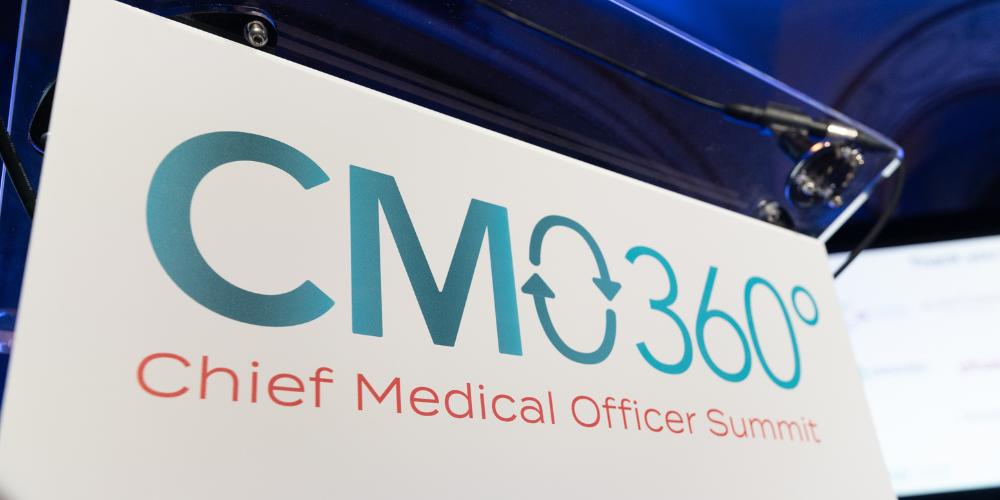
Robert Ross, MD, is the Incoming CEO of Surface Oncology after holding the role of Chief Medical Officer with the company since 2016.
Can you speak about your experience in the biotech industry?
From an early age I was driven to take care of patients with cancer. I was able to do clinical work in prostate cancer during my residency at University of California, San Francisco. It was particularly germane to me because my grandfather had recently died from pancreatic cancer. I really enjoyed the clinical trial process: enrolling patients, explaining research to them and thinking through the pros and cons of participating. I had a year between residency and fellowship so I went to my attending, Hal Barron, and asked if there was anything I could do to learn more about developing drugs. Hal told me that Genentech needed physicians to work on an antibody against VEGF. I spent the year working at Genentech on what became Avastin. That was a formative experience for me. I loved the scope of the program: the idea that we had more than a thousand patients enrolled with colorectal cancer and understanding that the drug was working in those patients. We had regulatory meetings. There were discussions with laboratory scientists. And the clinical development team at Genentech was extraordinary.
At the end of the year, the phase III trial results read out and it was clear that Avastin was going to help patients. It was a seminal moment at Genentech and a seminal moment in my career. I then did my fellowship at Dana-Farber Cancer Institute. After a few years at Dana Farber, I decided I wanted to go back into industry. I joined Infinity Pharmaceuticals where I ran the hedgehog signaling pathway inhibitor program. I worked at Infinity for about five years as a Medical Director and Senior Medical Director focusing on early cancer drug development. I moved to bluebird bio in 2012 because I wanted to expand outside of oncology and outside of small molecules and biologics. I got to lead the thalassemia and sickle cell programs as well as the oncology franchise at bluebird, where we developed our anti-BCMA CAR in collaboration with Celgene. When I joined, bluebird had maybe 32 employees and by the time I left in 2016, bluebird had 350 employees. I learned about a new area and new fields and was able to play a role in helping patients all over the world with the trials we were doing.
I came to Surface Oncology as the Chief Medical Officer in 2016. Since then, I have been building our clinical and regulatory groups and playing a role in our development strategy and overall corporate strategy.
What skills did you have to cultivate throughout your career for the CEO role?
I have been working steadily toward increased external exposure throughout my career in industry, including bluebird and more recently at Surface. I learned a lot from our CEOs and other members of the investor relations team to understand the investor and analyst perspectives and how they may differ from other audiences.
Understanding the financial side of the shop is another important skill set to develop. Most CMOs come from the R&D organization and feel comfortable with clinical development, research, early discovery and CMC. In terms of standard financial obligations, learn how people get paid, who signs the checks, how to make a forecast or long-range plan, and the difference between a forecast and a long-range plan. When do you need to have governance around changing a forecast or long-range plan? How do you think about financial strategy? When should we think about raising money? How should we raise the money and what do we need to know to get that done? I’ve been learning these things throughout my time in industry but the last few years have been a crash course.
You need to be curious. You have to care about what other people are doing and understand why they are doing it. And you need to be confident enough to ask why we are doing something. It’s okay if you’re asking about something that may seem silly or basic to them. If you’re curious and asking with the right tone and approach, it’s all learnable.
“You need to be curious. You have to care about what other people are doing and understand why they are doing it.”
How does your relationship with the board or investors change as you go from CMO to CEO?
The messaging around the transition is easy because it is true. We are now a full-fledged development company with two novel programs in the clinic and another following and two out-licenses either in the clinic or soon-to-be. My career has been spent in development and oncology so it’s very much in my sweet spot. Because I’ve spent so much time with our CEO and CFO doing the rounds with investors, I’m not a new entity for them. That transition has been easy so far. My advice for a CMO thinking about transitioning to CEO is to get involved and spend a lot of time with the analysts and investors.
It’s the CEO’s job to manage the board – and it’s a skill you can’t “practice” until you’re actually CEO. Anyone who wants to step into the role should watch closely and see how their CEO does it. As the CMO, I have some relationships with everyone on the board but I would interact with two or three board members outside board meetings maybe just once or twice a quarter. Now, as the CEO, I’ll have interactions with every board member probably multiple times a month and maybe even multiple times a week. That difference in board interactions from CMO to CEO is a sea change. Especially as a new CEO, it’s my responsibility to make sure every one of the board members is aligned to what we’re trying to accomplish.
What is your approach to hiring a CMO, especially with your background?
We are in really good shape because we’ve had a very strong SVP of development who can easily step up into the next role. We did a wonderful job hiring someone who is spectacular and it will be an easy transition.
More broadly, the mistake that people who transition from a CMO to CEO role can make is to try to do both jobs at the same time. That may be possible for a private company but for a public company it’s a real way to get yourself into trouble. You need to find the best CMO you can and, as the CEO, you have to pull back. There are so many other aspects of the business that I need to dive into and learn about and try to understand. I need to let the clinical development side run itself under strong leadership.
How do you best ensure the successful progression of a company from research into clinical development?
It starts with the mindset that you set at the very beginning. Long before you hire clinical folks and you file your first IND, you want to set the tone that what matters most is getting the drug to the patients. If you set up that mindset from the beginning, then it is more natural that you’re now starting to bring in clinical people because that is how you get the drugs to patients.
It is really important that the clinical people you hire, particularly early, answer questions well and want to teach the research side about what they do. You can get people on the clinical side who are maniacally focused on getting their work done but who don’t have the interest to bring others along. Those people might be great hires in the long term but in the short term you want people who are interested in interacting with and educating the early stage research folks.
"You are primarily responsible for bringing them that patient experience and ensuring they understand patient perspectives. If you do it well, it gets people excited and motivated about what they’re working toward and strengthens the culture of the organization."
What do you know now that you wish you knew when you first started as a CMO?
It’s important for you to be an ambassador not just for clinical development but for patients in general. In small biotech, you hire a bunch of people who maybe don’t have health care backgrounds but who are really interested in helping patients. You are primarily responsible for bringing them that patient experience and ensuring they understand patient perspectives. If you do it well, it gets people excited and motivated about what they’re working toward and strengthens the culture of the organization.
The second piece is about being curious. Join the research meetings. Join the CMC meetings. Ask the finance folks how they do what they do. Watch the lab folks do their assays and ask them questions about it. Be engaged. Especially in small biotech, there aren’t that many people and you want to be accessible to everyone in your organization – not just on the clinical side. It’s really easy to get buried in the protocols and clinical data and to forget about all of the touchpoints you need to have with the rest of the organization.
Is there anything else you wanted to add?
Fundamentally, we’ve tried to build the focus on helping patients into the fabric of Surface from the very beginning. What can we do to get drugs that work in cancer to the patients who need them. If you can get your organization aligned around that goal early, the benefits are profound. It’s one thing to have the clinical trial associates focus on the patients. It’s a whole other thing to have the people on the research side or the G&A side also feeling like what they’re doing is connected to the bigger whole. The CEO and CMO both play critical roles in that. You can’t underestimate the impact that has on the entire morale of the entire company.








